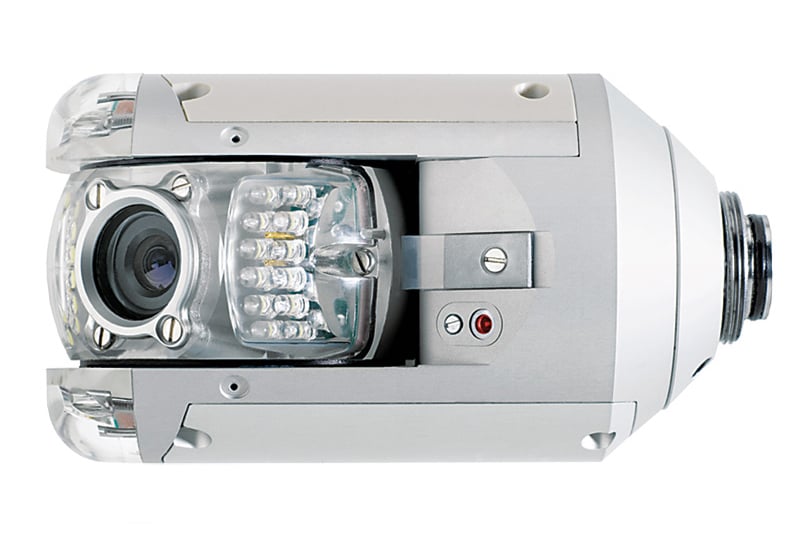CCTV Pipe Inspection – What You Should Consider

CCTV is a well-established technology for pipe inspections and it comes with many benefits.
It’s cost-effective, non-invasive, fast, accurate and versatile and with so many different models available on the market today which offer a wide range of functionality and capabilities, there’s a CCTV system to suit every pipe inspection application.
It’s proven to be particularly effective in assessing pipeline conditions in sewer and storm drain systems around the country, many of which are old and need their structural integrity evaluated so that rehabilitation work can be planned and prioritised.
However, as with any technology or product, there’s always a disclaimer. It’s not a magic wand. Yes, there are numerous benefits and opportunities offered by this widely-used remote visual inspection tool, but there are also some limitations and it’s important to get the whole picture before committing to any capital outlay or service contract.
As a stand-alone tool, a CCTV camera system is a relatively affordable option and if you consider the additional cost benefits (no excavation or digging costs or significant service interruption, fast location and evaluation of problems, savings as a result of early identification of potential weaknesses so that preventative maintenance work can be done etc), the savings are very apparent.
However, whether you purchase a camera or an entire pipeline inspection vehicle, there are future financial considerations that go beyond the initial capital outlay.
Maintenance. These devices are built tough to withstand extended use inside the harsh environments of pipelines but like any piece of equipment, for optimum performance, they do require ongoing maintenance. They may even break down – which could result in further costs.
Additional equipment. There are many different pipe inspection camera systems available to suit different applications, such as borescopes, push rod cameras, robotic crawlers and Pan-Tilt-Zoom (PTZ) camera systems plus you can get a range of accessories and useful supplementary equipment. Examples include guide brushes, skids, satellite modules which allow complete inspection of a branched pipe system, retrieval tool kits for removing foreign objects in small, inaccessible areas etc – all of which cost extra. A pipe inspection vehicle that is fully-kitted out with all the necessary tools and equipment (such as power tools, traffic management signs, battery backups for computers etc) will require significant capital investment too.
Computer costs and consumables. A major advantage of CCTV cameras for pipe inspections is that they can be fully integrated with software to deliver a comprehensive reporting solution. However, the cost of the software, upgrades, licencing and consumables needs to be considered.
Operator training. The high definition images and video linked to advanced software packages provide clear and precise information on the condition of the assets under inspection, but operators still need to be trained to use the CCTV equipment. In Australia, the Conduit Inspection Reporting Code of Australia WSA05-2008, published by the Water Services Association of Australia (WSAA), is the current Australian standard for this work.
Personnel. Some pipe inspection cameras require several people to operate them safely. For example, Inuktun, a global expert in remote controlled robotic transport and delivery of visual inspection equipment and instrumentation tooling, advises on its website that onsite crews (for its Versatrax crawler system) should have a minimum of three people, namely two crawler deployment handlers and one console operator. They also advise that every member of the inspection team should wear standard personal safety equipment including steel toed boots, safety vests, hard hats and gloves. These are all resources and costs that need to be considered.
Certification. Permits, licences, insurance and other certification may be required which could incur additional costs.
These are all considerations when you’re choosing a CCTV camera for pipe inspections – and although the benefits of these systems are undisputed, it’s important to cover all bases. Your choice of equipment supplier is another factor that will have a material influence on the overall cost of your CCTV camera system – so make sure they offer a package that makes financial sense as well as meets your operational needs. What’s their service record like? Do they offer flexible terms? Do they have the technical knowledge to help you make the most appropriate equipment choice – or are they only interested in selling you the most expensive item?
Nexxis is the right choice when it comes to technical equipment as we have hands-on industry experience, a flexible approach and a good understanding of how your business works so we can tailormake an equipment solution that meets your changing needs. We also supply an extensive range of quality pipeline inspection camera systems, so we’ll have a product that to suit any application. Contact us to see how we can help you deliver the best solutions to your projects through true collaboration.
